Ifeion and its cultivation
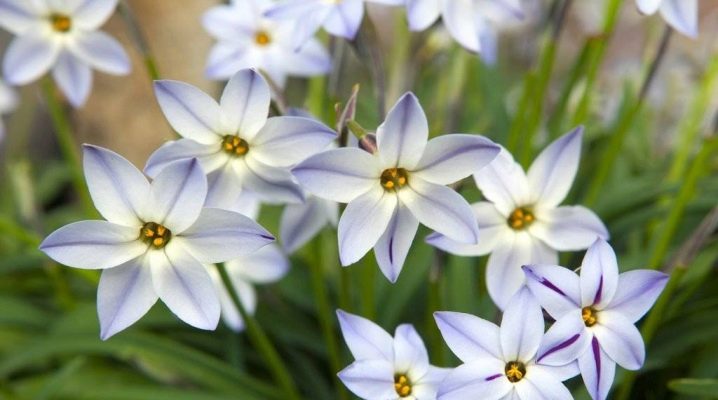
Ifeion is a miniature and showy bulbous plant. Its flowers resemble stars, they are very beautiful in borders or on windows. The flower is little known, but its cultivation does not cause any particular difficulties.
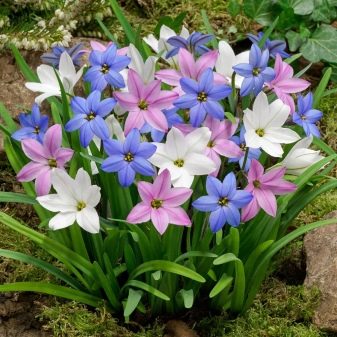
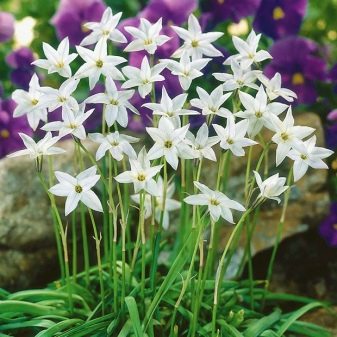
general description
Ifeion is a genus of bulbous plants from the Amaryllis family (subfamily Onions). Its close relatives are alliums, decorative bows. There are about 25 species in the genus. For decorative purposes, only one species is grown - Ipheion uniflorum. This plant is up to 15-20 cm high. Some varieties can reach a height of 25-30 cm. The bush is small in width - up to 15 cm. The leaves are dark green, narrow, shiny. If you rub the surface of the leaf, it will give off a characteristic garlic or onion odor. The underground organ is an irregular ovoid bulb. Medium-sized bulbs - 2-3 cm in length, tend to grow in dense colonies, grow well.
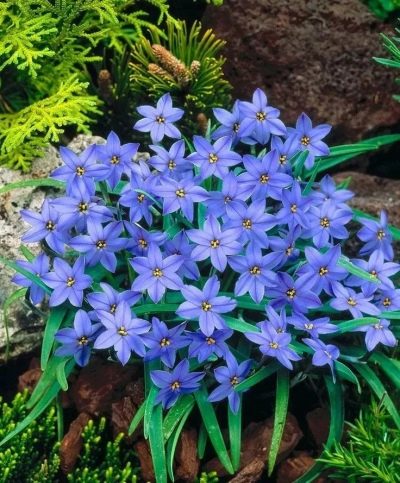
The flowers are very beautiful, single, up to 3 cm in diameter, resemble stars. The petals are evenly colored, but a noticeable stripe of a thicker color may pass in the center. Coloring can be different, it all depends on the variety. The main range is represented by white, lilac and blue tones. The flowers are fragrant, the smell is bright. In the West, the flower is called spring starflower - "spring star" or "spring starflower", as well as plant of the moon - "moon flower" (about white varieties).
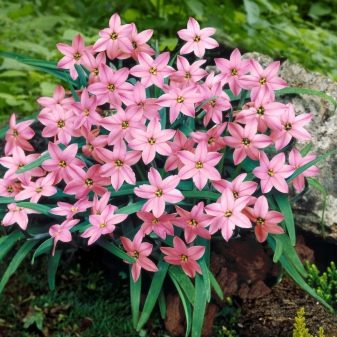
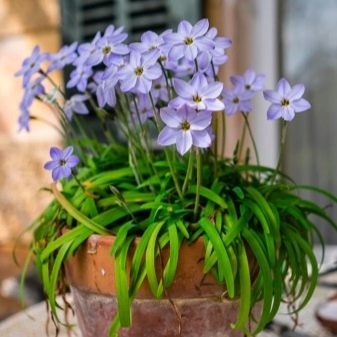
The homeland of ifheion is the subtropics and tropics of South America, Argentina, Uruguay. The flower was brought to the UK from Buenos Aires back in 1820.
Types and varieties
The only species that has found application in decorative floriculture is the one-flowered Ifeion (Latin - Ipheion uniflorum or Ifeion uniflorum). The rest of the species are not yet particularly familiar to gardeners. For example, in Ipheion ameghinoi, the flowers are very small, with narrow green bent petals, which are almost invisible in the grass. Ipheion recurvifolium is very beautiful. It has white, abundant stellate flowers, but is rare. Most species have been studied very poorly not only by breeders, but also by botanists.

Today there are many varieties of single-flowered ifaeon.
- Charlotte Bishop Are delicate pink flowers with a darker stripe down the center of each petal. The buds are dark pink, brighten with dissolution. Grow coarser in good conditions (soft, loose and well-drained soil).
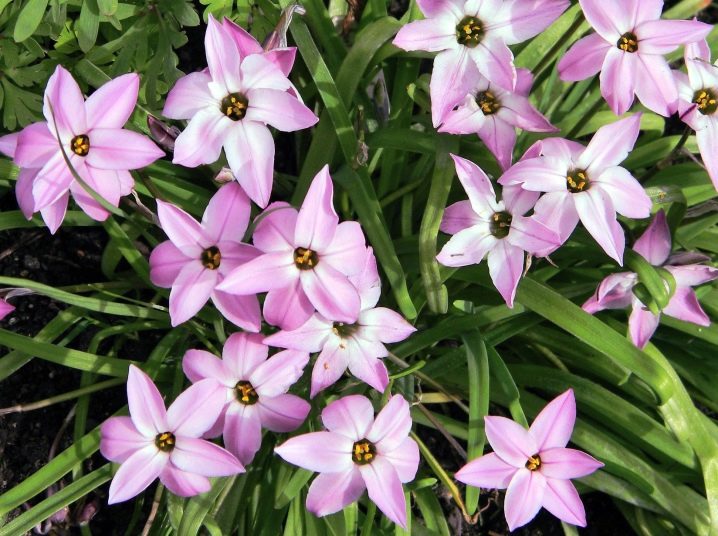
- Jessie - sky blue flowers originally from Argentina. There is a darker stripe in the center of each petal.
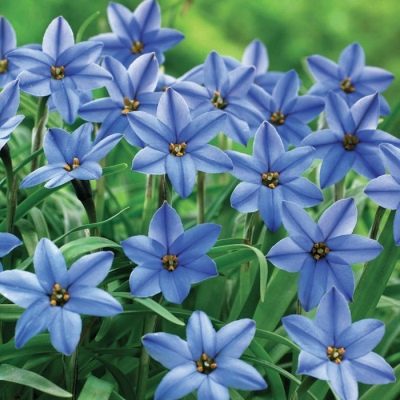
- Album - snow-white delicate flowers. In cloudy weather, they acquire a slight bluish blush.
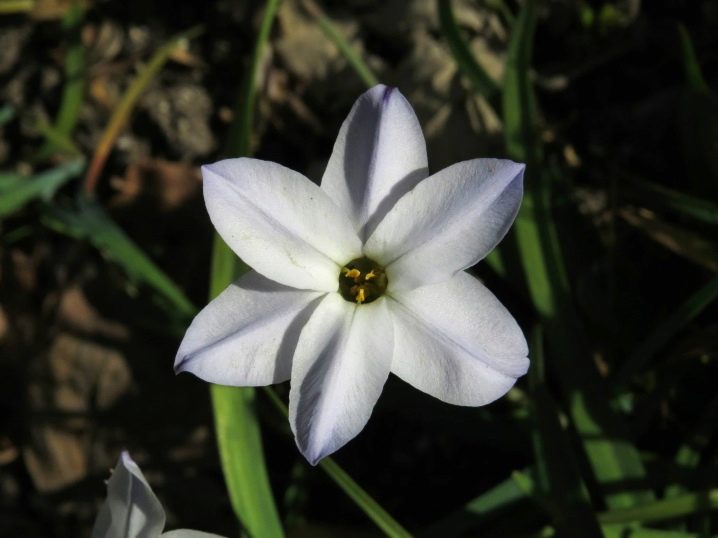
- Wisley Blue - lilac-blue flowers of a beautiful tonal color. A dark lilac stripe runs along the center of the petals; towards the edges, the petals brighten. The cultivar was awarded the RHS Award of Garden Merit.
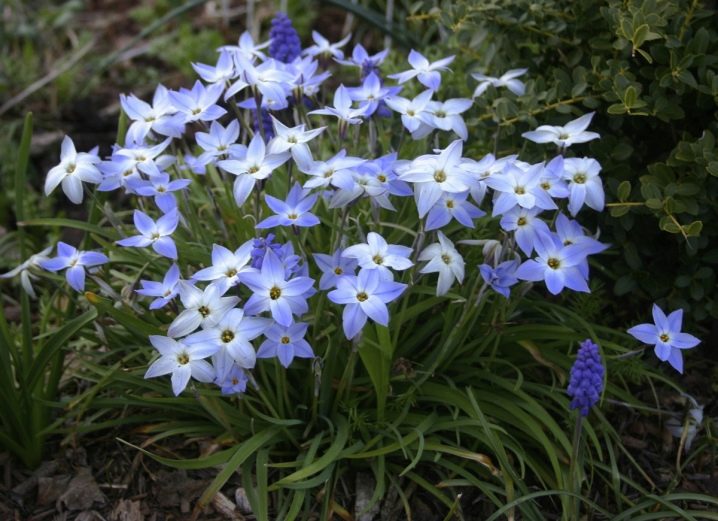
- White Star - white flowers, sometimes with delicate blue shadows at the tips of the petals.
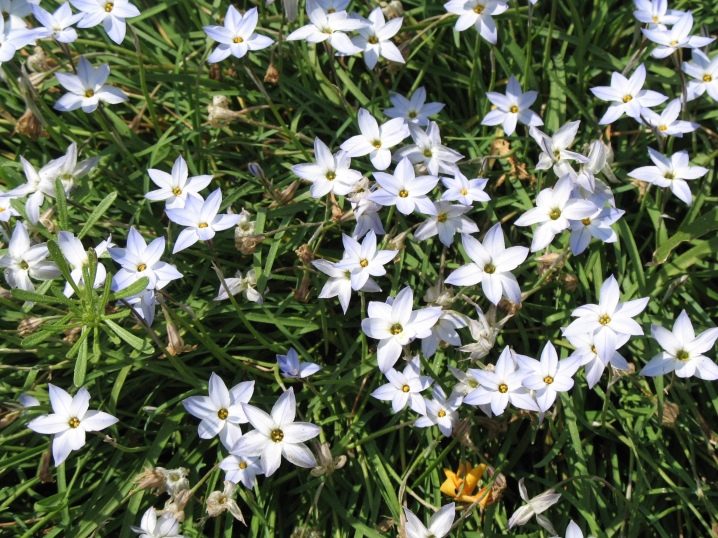
- Rolf Fiedler - blue flowers with wide petals. The petals are wider than Jesse or Wisley Blue, giving the plant a new impression. Also an award winner.
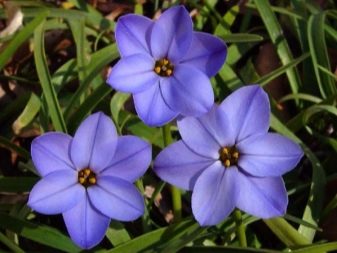
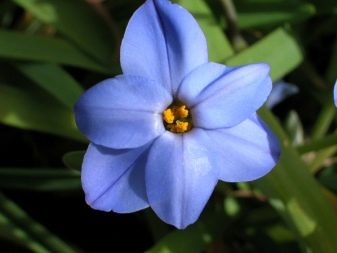
- Alberto Castillo - snow-white flowers. One of the most famous garden varieties. It has larger flowers than the Album variety. Named after the owner of a botanical garden in Buenos Aires, who first cultivated this variety in 1980. Sometimes a thin olive green stripe is visible in the center of the petals.

The flowers are very elegant. They look amazing in mass plantings, contrast beautifully with greenery.
You can also find paint mixtures on sale.
Landing
A windless sunny area is selected for the plant. The sun should be scattered. Places with a scorching midday sun should be avoided. Ifeion can grow in partial shade. The soil should be light, well-drained, airy and nutritious. The optimum composition of the soil: peat - 6 parts, sphagnum moss - 2 parts, bone meal - 2 parts. You can prepare a mixture of peat, ordinary garden soil and leaf humus. The main thing is that the soil is soft, it allows moisture and air to pass through well, otherwise the bulbs may suffer from rot.
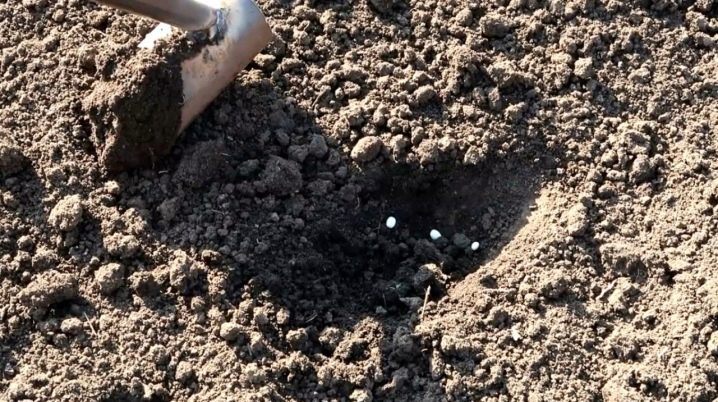
Bulbs are planted in open ground in April. In warm regions - in autumn. The bulbs are planted with a sharp tip upward according to the 8x8 scheme, the planting depth is 5-6 cm. Lush flowering will be in the second year, in the first year the plants may bloom, but the plantings are still not dense enough.
The plant is used for borders, flower beds, including carpets, rockeries, rock gardens, for growing in pots and containers. It is better to choose a place for planting where you can feel the excellent aroma of flowers. Ifeions go well with tender anemone (Blanda anemone), arum Italian, hellebores, muscari and other spring small-bulbous plants.
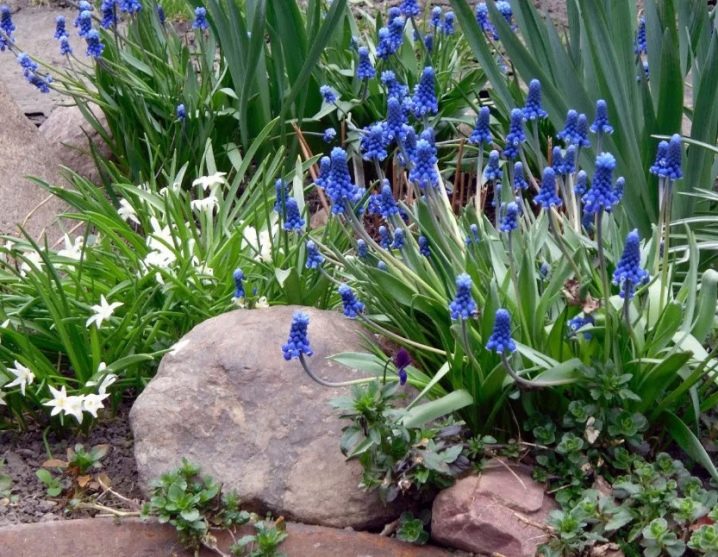
They look very nice against the background of lawns, stone or brickwork, greenery.
Growing care
Outdoors, care comes down to a few simple steps.
- As soon as the snow melts, the shelter is removed. By this time, the plants will already appear from the ground.
- In April-May, the flower blooms, flowering lasts 1.5 months. During this period, if the weather is dry, watering is needed.
- Gradually, the plant prepares to retire. As soon as the flowers die off, the watering is reduced.
- If necessary, the plant is transplanted in August-September. But there is no need to do this annually. A transplant is performed every 3 years to thin out too dense plantings.

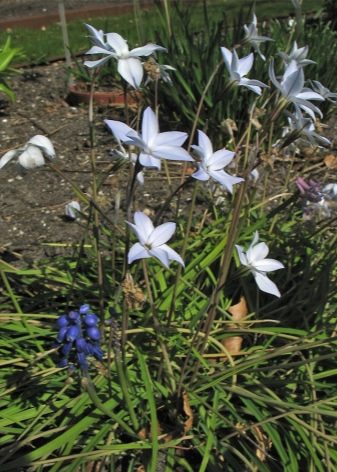
The plant needs care only during the active period. They remove weeds, shallowly loosen the soil. Watered with soft warm water as needed, preventing the soil from drying out or waterlogging.
Ifeion winters well if the winter temperature does not drop below -10-15 ° C. In the southern regions, shelter for the winter is not required.
If the winter is colder and snowless, the plantings are covered with a thick layer of leaves or sawdust. It is best to make a multi-layer shelter from containers, boxes, which are sprinkled on top with something loose.
At home, the flower is watered less, and when the ground part dies off, the plant is placed in a cool place. With the arrival of spring, active care is resumed. In warm regions, for example, in California, the plant has the following life cycle: leaves appear in the fall and last until spring, in winter and early spring, the plant blooms, and in summer it retires.
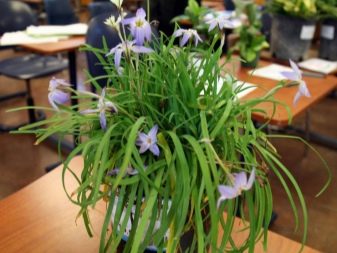
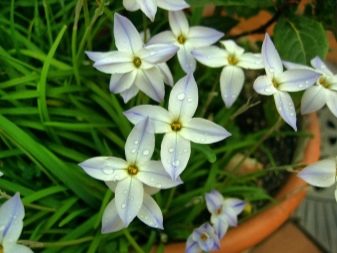
Reproduction
Like all bulbous plants, the Ifeion reproduces well by dividing the nest. It is necessary to transplant the plant 1 time in three years, during the same period the nests are removed from the ground, the “babies” are carefully separated from the mother's bulbs. "Children" are planted in a new place. They take root well, bloom for 2 years.
Ifeion also propagates by seeds, but this method is rarely used in amateur floriculture. The seeds of the plant are active, and caring for the crop is not difficult, but the seedlings need conditions, a place, and they will grow relatively slowly. The flower reproduces well by self-sowing.
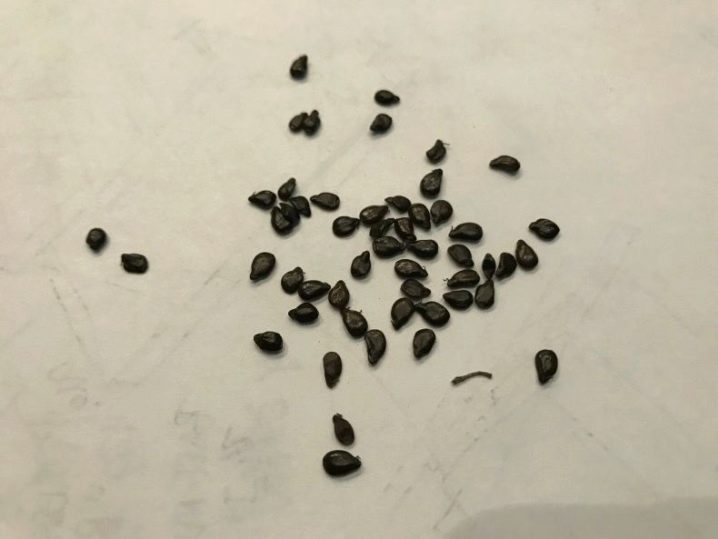
Like all bulbous plants, it lends itself well to forcing. You can get delicate flowers at any time of the year. They are driven out in containers with loose soil, sand, aquagel, gravel and water. You need to plan 6 weeks for the flowers to appear. For distillation in water, a thick layer of gravel is placed on the bottom of the dishes, the bulbs are poured with water, and 1 tablet of activated carbon is added. The bulbs are placed so that the bottoms touch the water slightly. They are placed in a dark place, periodically examined and water is added.

Plants are exposed to light when the shoots are 7 cm tall. The place should be light. Forced plants require more light than those that live outdoors. Periodically, the plants are turned so that the stems do not bend.
Diseases and pests
Ifeion is not inclined to get sick often. The strong garlic smell of its juice repels insects, and the leathery elastic surface of the leaf protects against diseases. Problems only happen with plants that have been cared for by serious mistakes. For example, a flower is planted in too dense clay soil.
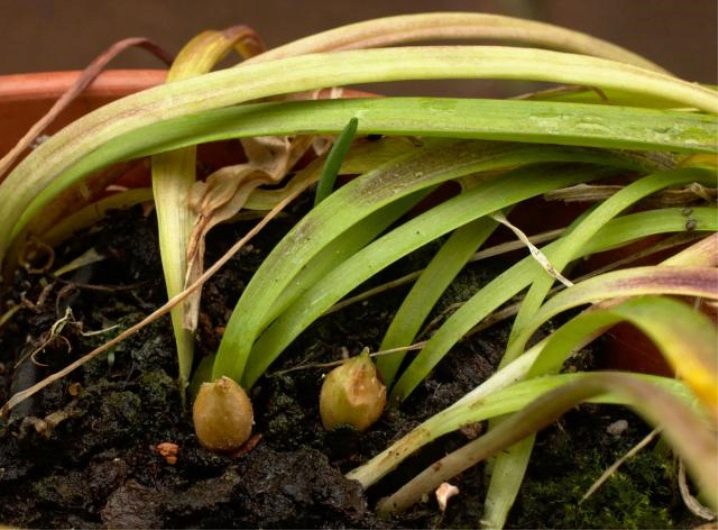
In such cases, the plants can be occupied by spider mites. Enough 1-2 treatments "Fitoverm". If the bulbs in the open field have suffered greatly from rot (for example, a very damp and cold summer), then they are dug up in September, dried, etched in a solution of potassium permanganate, all blackened places are removed, and sprinkled with activated charcoal. Stored until spring in a slightly moistened mixture of peat and moss, or immediately planted in a pot. Watering is resumed very carefully.
Ifeions are very popular in the UK and poorly known in Russia. But completely undeserved.
The flower is very unpretentious and does not require special care from the gardener. And its star-shaped flowers are so clear and crisp that they can decorate any spring garden.
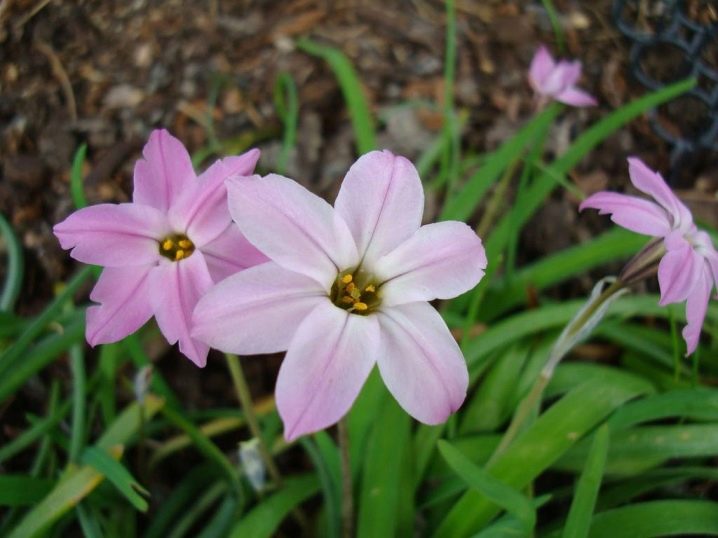







































































































The comment was sent successfully.